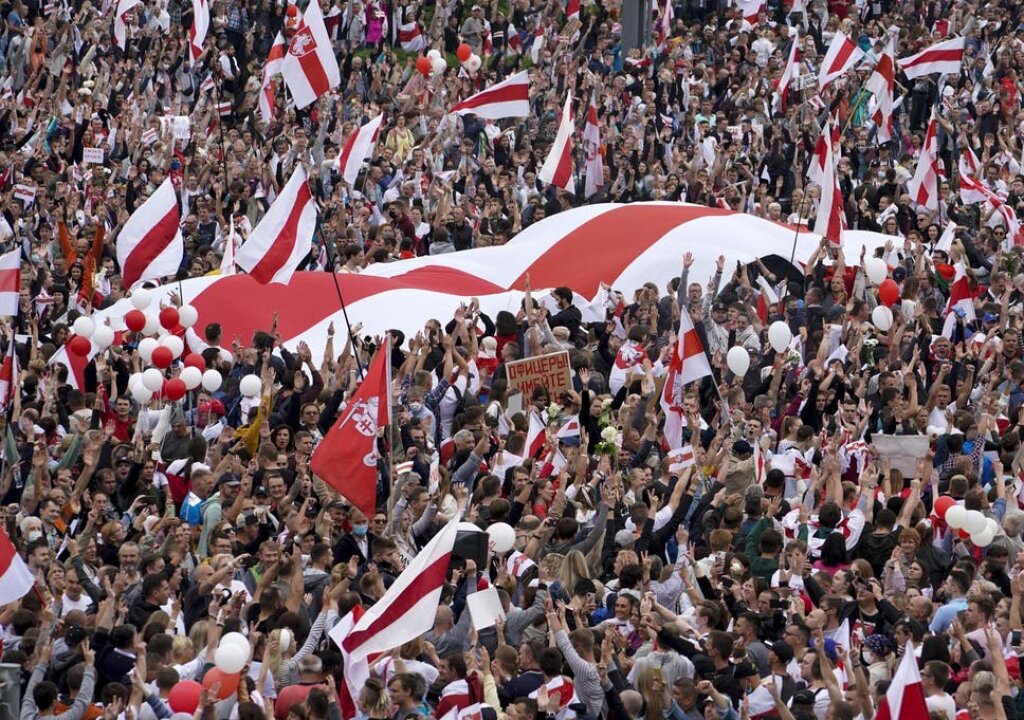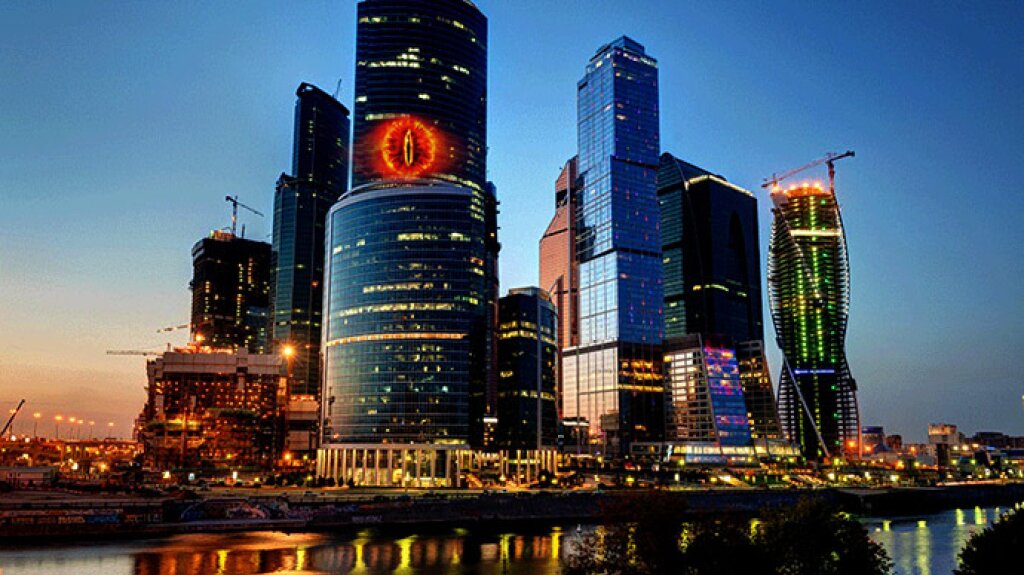This piece first appeared on Al Jazeera on Friday, 8/21.
Anna Ohanyan is the Richard B. Finnegan distinguished professor of political science and international relations at Stonehill College. She is the author of Networked Regionalism as Conflict Management (Stanford University Press, 2015) and editor of Russia Abroad: Driving Regional Fracture in Post-Communist Eurasia and Beyond (Georgetown University Press, 2018). Her co-edited volume on Armenia’s Velvet Revolution is forthcoming this September.
Unprecedented in Belarus’ modern history, the post-election protests against President Lukashenko are continuing unabated, with crowd sizes reaching over 200,000. The popular outpouring is partly in response to Lukashenko’s brutal and violent crackdown on protesters who challenged the vote as fraudulent. In the government’s initial response last week, at least 6,700 were detained. The opposition candidate, Svyatlana Tsikhanouskaya, was forced to flee the country, striving to sustain the movement from afar. Lukashenko’s authoritarian regime has been unchallenged for 26 years, and has been remarkably durable. He has sustained this durability by playing the West and the Russia against one another.
Despite his tactical jockeying for regime survival, Lukashenko created deep economic and political connections with Russia during his rule, ranging from Russian energy subsidies to Belarus’ membership in Russia-led regional groupings such as the Collective Security Treaty Organization and the Eurasian Economic Union. Importantly, Lukashenko had also proposed to then-President Yeltsin to unite Belarus with Russia, hoping that he himself would emerge as the leader of the new union. The rise of Putin eliminated such hopes for Lukashenko but the idea, never implemented, remained under consideration when Putin came to power. Indeed, Putin started pushing for the union last year, partly as a way to sustain his own rule beyond 2024.
Can Belarus have its Democratic Breakthrough in Russia’s Authoritarian Orbit?
Aside from their unprecedented scale for Belarus, the protests are significant globally because they are unfolding in Russia’s authoritarian security orbit. Belarus is only the second state, after Armenia, among those with deep security and economic ties with Russia but where the people have come out against their Kremlin-backed rulers. As such, Armenia’s nonviolent disobedience campaign during its Velvet Revolution in 2018 offers range of tactical lessons for both the movement and the government in Belarus.
Three key lessons emerged from Armenia’s successful democratic breakthrough in Russia’s orbit. First, the protesters in Armenia worked hard to keep the protests deeply local. They resisted attempts by the ruling forces to frame the protests as another “color revolution”, which would have delegitimized the protests as ones orchestrated by the West. Indeed, “Velvet is not a color”, as I argue in my forthcoming co-edited volume on Armenia’s Velvet revolution. Recognizing and capitalizing on the deeply organic and grassroots nature of the protest movement in Belarus, as was the case in Armenia, is critical for a successful breakthrough.
Second, Armenia’s protest leader, a member of a parliament at the time and now the prime minister, signaled early, clearly, and consistently, that the movement, if successful, would not lead to a foreign policy U-turn away from Russia. While Armenia’s security needs are quite different from those of Belarus, this messaging played a role in keeping the Russian soldiers in their bases inside Armenia. Indeed, Russian restraint in Armenia’s Velvet revolution is an unrecognized and understudied political aspect of Armenia’s Velvet Revolution.
Third, the leader of Armenia’s opposition movement, himself a parliamentarian, negotiated with the incumbent forces both informally and individually, as well as institutionally within the parliament. The movement unfolded within an imperfect but nevertheless formal constitutional order, generating much-needed stability and legitimacy to the campaign to increase numbers in the street – a key marker of successful disobedience campaigns everywhere.
The protest movement in Belarus has advantages as well as hurdles to overcome for a peaceful democratic breakthrough
Indeed, in many respects, the movement in Belarus is similar to Armenia’s Velvet revolution of 2018. As in Armenia, Belarus’ rapidly growing post-election protests are unfolding in Russia’s authoritarian security orbit. Both countries are members of Russia-centric regional organizations such as the Collective Security Treaty Organization and the Eurasian Economic Union. Both countries are economically reliant on Russia, which has operated in both countries often through strategic corruption and oligarchic structures to capture significant portions of the economy. And both countries have both a shared Soviet history, and an earlier history in Russia’s imperial periphery.
In contrast to Armenia, Belarus’ protests are disadvantaged by a relatively weaker civil society. Post-Soviet Belarus has been a more deeply dictatorial regime, compared to Armenia’s “soft authoritarians”. By extension, Armenia’s civil society had years of space for trial-and-error, and a long-string of public protests with varied size and scope that consolidated a protest culture and provide the needed organizational support the when an opening emerged in 2018. Such processes are only beginning in Belarus. Even if Lukashenko succeeds in holding on, an outcome growing increasingly unlikely by the day, he will have to contend with a more mobilized and resilient ‘people power’ movement than the one he has crushed over the years.
But Belarus is perhaps in better position than Armenia’s protest movement in one respect, in that it is not involved in an unresolved regional conflict. If so, Lukashenko could have fueled and activated the familiar ‘security-versus-democracy’ playbook typically used by autocratic regimes to silence democratic voices. This tactic was used by Armenia’s pre-Velvet rulers for years, and is currently applied by Azerbaijan’s own dictator next door, Ilham Aliyev, in silencing opposition forces inside the country.
It is not surprising, therefore, that Lukashenko is trying to contrive an external threat where there is none. He has claimed, inaccurately, that there are NATO forces building up in Eastern Europe, attempting to portray the protest in Belarus as a threat to its, and Russia’s, security. Lukashenko will continue to try to securitize the developments. He is openly is attempting to pull Russia in, calling on Putin and the CSTO to engage. This strategy of securitization sets up a false choice between democracy on the one hand, and stability and disorder on the other hand.
Most importantly, unlike Armenia, Belarus is privileged with resiliency in its regional neighborhood. As I have argued in these pages and in my work on regional fracture in world politics, the extent of regional connectivity in Russia’s vicinities can make or break Russia’s incursions into its “near abroad”, be they military or hybrid. The democratic consolidation in the Baltic states is an obvious political asset for a pro-democracy movement in Belarus. A stronger regional pole of democracies in a region makes it more costly for autocrats in the region to defend their rule. Less appreciated is the regionally integrated fabric among the Baltic states, which models regionally-organized civic culture and people power. With the Kremlin in its backyard, this regionally-wired democratic model works to support grassroots processes of political mobilization. It also helps to modify and prevent the looming polarization inside Belarus which authoritarian coordination between Lukashenko and Putin is set to create.
Aside from the specific model of Baltic democracies, Belarus is surrounding by other democracies, some more consolidated than others. This is in sharp contrast to Armenia which is surrounded by authoritarian states, the sole exception being a democratic Georgia to the north. Forming a democratic dyad with Georgia, Armenia’s movement succeeded in its breakthrough, and perhaps this factor helped to constrain Russian involvement during its Velvet Revolution. The cost for Russian intervention in Belarus would be much higher for the Kremlin given the regional resiliency around Belarus from the Baltics to Poland. And unlike in Armenia, Putin’s erstwhile push to formally unite Belarus with Russia has already created a backlash among the populace in Belarus, exposing the disingenuous nature Putin’s claims of “protecting” Belarus’ security and independence. Russian intervention in the context of post-election protests can revive such fears and push many more into the streets.



